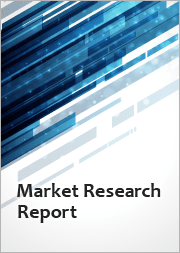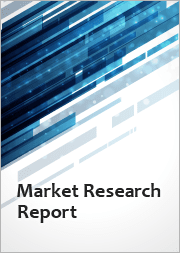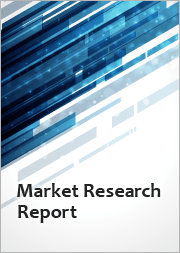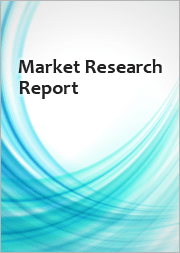
|
시장보고서
상품코드
1489421
폴리우레탄(PU) 솔 시장 예측(-2030년) : 유형, 원료, 유통 채널, 용도, 지역별Polyurethane (Pu) Sole Market Forecasts to 2030 - Global Type (PU Foam, PU Adhesives and Other Types), Raw Material, Distribution Channel, Application and By Geography |
||||||
Stratistics MRC에 따르면 세계의 폴리우레탄(PU) 솔 시장은 2023년에 58억 달러를 차지하며, 예측 기간 중 CAGR은 9.6%로 성장하며, 2030년에는 102억 달러에 달할 전망입니다. 폴리우레탄(PU) 솔은 내구성, 편안함, 범용성으로 인해 신발의 주요 컴포넌트입니다. 운동화, 캐주얼, 정장 등 다양한 유형의 신발에 사용되는 PU 밑창은 가벼운 쿠션, 충격 흡수 및 방수 기능을 갖추고 있습니다. PU 밑창은 남성, 여성, 유아 등 다양한 소비자층을 대상으로 온라인 및 오프라인 소매 채널을 통해 전 세계에 유통되고 있으며, 뛰어난 견인력과 지지력을 제공하면서 신발의 디자인을 맞춤화할 수 있는 유연성을 가지고 있습니다.
Invest India에 따르면 인도 신발 시장은 CAGR 8%로 성장하여 2025년 118억 달러에 달할 것으로 예상되며, 1인당 신발 소비량은 2022년 2.33켤레에서 2025년 2.94켤레로 증가하며, 2024-2025년 37억 6,300만 켤레에 달할 것으로 예상됩니다.
폴리우레탄(PU)의 우수한 특성
폴리우레탄의 뛰어난 내구성, 다목적성, 경량성은 자동차 부품에서 건축자재에 이르기까지 다양한 분야에서 선호되고 있습니다. 단열 특성은 건물과 가전제품의 에너지 효율을 높이고, 내화학성은 열악한 환경에서도 긴 수명을 보장합니다. 또한 PU의 편안함과 쿠션감은 매트리스, 신발과 같은 소비자 제품에도 적합합니다. 가공이 용이하기 때문에 복잡한 형태와 디자인을 비용 효율적으로 제조할 수 있으며, 제조업체에게 더욱 매력적으로 다가갈 수 있습니다. 산업계가 내구성, 기능성, 효율성을 제공하는 고성능성 소재를 계속 찾고 있는 가운데, PU는 우수한 특성으로 인해 계속해서 최전선에 서고 있습니다.
변동하는 원자재 가격
이소시아네이트, 폴리올 등 주요 원료 가격의 급격한 변동은 생산 일정을 방해하고 생산 비용을 증가시켜 PU 제조업체의 이윤을 감소시킬 수 있습니다. 이러한 변동은 기업이 효과적인 계획과 예산을 세우는 것을 어렵게 만들어 공급망과 가격 전략의 불확실성을 초래합니다. 또한 원자재 가격의 급격한 상승으로 인해 제조업체는 비용 증가를 소비자에게 전가하여 PU 기반 제품의 가격이 상승 할 수 있습니다. 또한 원자재 가격의 예측 불가능성은 PU 산업의 신규 프로젝트와 신기술에 대한 투자를 억제하고 기술 혁신과 성장 기회를 방해할 수 있습니다.
신발 선택에 있으며, 편안함과 스타일에 대한 관심 증가
소비자들이 편안한 착용감과 세련된 디자인을 모두 갖춘 신발을 선호함에 따라 PU 소재의 다용도성과 성능 특성으로 인해 PU 기반 소재에 대한 수요가 증가하고 있습니다. 쿠션, 지지력, 유연성을 제공하는 PU는 현대 소비자의 편안함 요구를 충족시키려는 신발 제조업체에게 이상적인 선택입니다. 또한 PU는 다양한 모양과 디자인으로 성형할 수 있으며, 스타일리시하고 트렌디한 신발을 만들 수 있습니다.
친환경
PU의 생산에는 화학 물질이 사용되기 때문에 생산 과정에서 휘발성 유기 화합물(VOC)을 배출하여 대기 오염과 환경 악화의 원인이 될 수 있습니다. 또한 PU 제품은 시간이 지남에 따라 유해 물질을 방출하여 인체 건강과 생태계에 위험을 초래할 수 있으며, PU는 생분해되지 않고 매립 될 수 있으므로 환경에 대한 우려가 더욱 커지고 있습니다. 배출량을 줄이고 지속가능한 제조 관행을 촉진하기 위한 규제 조치는 PU 제조업체에 추가적인 규정 준수 비용을 부과하여 수익성에 영향을 미칠 수 있습니다.
COVID-19의 영향
폐쇄, 소비자 지출 감소, 공장 폐쇄는 신발 생산 및 판매에 영향을 미치고 PU 밑창 시장에 영향을 미쳤습니다. 그러나 규제가 완화됨에 따라 수요가 점차 회복되고 원격 근무 및 야외 활동을위한 편안하고 내구성이 뛰어난 신발에 대한 관심이 높아지면서 E-Commerce 판매도 증가했습니다. 각 제조업체는 안전 조치 시행, 디지털화 가속화, 제품 라인업 다양화 등으로 대응했습니다. 전반적으로 COVID-19로 인해 초기에는 어려움에 직면했지만, PU 밑창 시장은 회복력을 보여 주었고, 상황 변화에 적응했습니다.
예측 기간 중 메틸렌디페닐디이소시아네이트(MDI) 부문이 가장 큰 비중을 차지할 것으로 예상됩니다.
메틸렌 디 페닐 디 이소시아네이트(MDI)는 유연성, 내구성, 경도, 탄력성 등 PU 소재의 물리적, 기계적 특성을 결정하는 데 중요한 역할을하기 때문에 MDI(MDI) 부문은 유리한 성장을 이룰 것으로 예상됩니다. 메틸렌디페닐디이소시아네이트의 배합과 품질에 차이가 있으면 PU 신발 밑창의 성능 특성에 영향을 미쳐 착용감, 내마모성 및 전체 제품 품질에 차이가 발생할 수 있습니다. 제조업체는 PU 밑창 제품이 원하는 성능을 갖도록 하기 위해 메틸렌디페닐디이소시아네이트 등급을 신중하게 선택하고 배합 레시피를 최적화해야 할 수 있습니다.
예측 기간 중 작업화 및 안전화 부문이 가장 높은 CAGR을 보일 것으로 예상됩니다.
작업화 및 안전화 부문은 예측 기간 중 가장 높은 CAGR 성장을 보일 것으로 예상됩니다. 이는 위험한 환경에서 일하는 근로자의 보호를 보장하기 위해 특정 안전 표준 및 규정을 충족해야 하기 때문입니다. 폴리우레탄 밑창은 미끄럼 방지, 전기 위험 보호, 펑크 방지 등 이러한 요구 사항을 충족하도록 설계할 수 있습니다. 장시간 서서 일하는 직원은 피로를 줄이고 발 관련 부상 위험을 최소화하기 위해 적절한 쿠션, 지지력 및 충격 흡수 기능을 갖춘 신발이 필요합니다.
가장 큰 점유율을 차지하는 지역 :
아시아태평양은 인구가 많고 중산층이 확대되고 있으며, 양말 제품 소비층이 두터워 예측 기간 중 가장 큰 시장 점유율을 차지할 것으로 예상됩니다. 또한 아시아태평양의 패션에 민감한 소비자들은 스타일과 기능성을 겸비한 신발에 대한 수요를 촉진하고 있습니다. 폴리우레탄 밑창은 다용도한 특성으로 인해 선호되고 있으며, 디자이너와 브랜드가 트렌디하고 편안한 신발을 만들 수 있습니다.
CAGR이 가장 높은 지역 :
북미 소비자들은 편안함, 성능, 내구성을 갖춘 신발을 선호하기 때문에 북미는 예측 기간 중 가장 높은 CAGR을 나타낼 것으로 예상됩니다. 폴리우레탄 신발 밑창은 이러한 요구 사항을 충족시키며 이 지역 수요를 주도하고 있습니다. 또한 제조업체들은 신발의 성능과 미적 감각을 향상시킬 수 있는 첨단 폴리우레탄 배합을 개발하기 위해 혁신을 거듭하고 있습니다. 여기에는 향상된 쿠셔닝, 에너지 리턴, 미끄럼 방지 등의 기능이 포함됩니다.
무료 맞춤형 서비스 :
이 보고서를 구독하는 고객은 다음과 같은 무료 맞춤화 옵션 중 하나를 이용할 수 있습니다.
- 기업 개요
- 추가 시장 진출기업의 종합적인 프로파일링(최대 3사)
- 주요 기업의 SWOT 분석(최대 3사)
- 지역 세분화
- 고객의 관심에 따른 주요 국가별 시장 추정, 예측, CAGR(주: 타당성 확인에 따름)
- 경쟁사 벤치마킹
- 제품 포트폴리오, 지역적 입지, 전략적 제휴에 따른 주요 기업 벤치마킹
목차
제1장 주요 요약
제2장 서문
- 개요
- 이해관계자
- 조사 범위
- 조사 방법
- 데이터 마이닝
- 데이터 분석
- 데이터 검증
- 조사 어프로치
- 조사 정보원
- 1차 조사 정보원
- 2차 조사 정보원
- 전제조건
제3장 시장 동향 분석
- 서론
- 촉진요인
- 억제요인
- 기회
- 위협
- 용도 분석
- 신흥 시장
- COVID-19의 영향
제4장 Porter's Five Forces 분석
- 공급 기업의 교섭력
- 구매자의 교섭력
- 대체품의 위협
- 신규 진출업체의 위협
- 경쟁 기업간 경쟁 관계
제5장 세계의 폴리우레탄(PU) 솔 시장 : 유형별
- 서론
- PU 폼
- PU 접착제
- 기타
제6장 세계의 폴리우레탄(PU) 솔 시장 : 원료별
- 서론
- 톨루엔 디페닐 디이소시아네이트(TDI)
- 메틸렌 디페닐 디이소시아네이트(MDI)
- 폴리올
제7장 세계의 폴리우레탄(PU) 솔 시장 : 유통 채널별
- 서론
- 오프라인 소매
- 온라인 소매
- 도매업체와 판매업체
- 기타
제8장 세계의 폴리우레탄(PU) 솔 시장 : 용도별
- 서론
- 캐주얼 슈즈
- 스포츠화
- 포멀 슈즈
- 작업화와 안전화
- 슬리퍼와 샌들
제9장 세계의 폴리우레탄(PU) 솔 시장 : 지역별
- 서론
- 북미
- 미국
- 캐나다
- 멕시코
- 유럽
- 독일
- 영국
- 이탈리아
- 프랑스
- 스페인
- 기타 유럽
- 아시아태평양
- 일본
- 중국
- 인도
- 호주
- 뉴질랜드
- 한국
- 기타 아시아태평양
- 남미
- 아르헨티나
- 브라질
- 칠레
- 기타 남미
- 중동 및 아프리카
- 사우디아라비아
- 아랍에미리트
- 카타르
- 남아프리카공화국
- 기타 중동 및 아프리카
제10장 주요 개발
- 계약, 파트너십, 협업, 합병사업
- 인수합병
- 신제품 발매
- 사업 확대
- 기타 주요 전략
제11장 기업 프로파일링
- Asahi Kasei Corporation
- Coim Group
- BASF SE
- Dow
- Covestro AG
- INOAC CORPORATION
- Huntsman International LLC
- Era Polymers Pty Ltd
- Manali Petrochemicals Limited
- LANXESS
- Kasodur
- Cellular Mouldings
- The Lubrizol Corporation
- Trelleborg AB
- Wanhua
- Bkind Polymers LLP
- VCM Polyurethanes Pvt. Ltd.
- Perstorp AB
- Airysole Footwear Pvt Ltd
According to Stratistics MRC, the Global Polyurethane (Pu) Sole Market is accounted for $5.8 billion in 2023 and is expected to reach $10.2 billion by 2030 growing at a CAGR of 9.6% during the forecast period. Polyurethane (PU) soles are a key component in footwear, prized for their durability, comfort, and versatility. Used across various shoe types, including athletic, casual, and formal wear, PU soles offer lightweight cushioning, shock absorption, and water resistance. Their flexibility allows for customization in shoe design while providing excellent traction and support. PU soles cater to diverse consumer segments, including men, women, and children, and are distributed through both online and offline retail channels worldwide.
According to Invest India, the Indian footwear market is expected to grow at 8 percent CAGR to be US$ 11.8 Bn by 2025 and the per-capita consumption of footwear is predicted to increase from 2.33 pairs in 2022 to 2.94 pairs in 2025 that is 3,763 million pairs in 2024-2025.
Market Dynamics:
Driver:
Superior properties of polyurethane (Pu)
Polyurethane exceptional durability, versatility, and lightweight nature make it a preferred choice for applications ranging from automotive components to construction materials. Its insulating properties enable energy efficiency in buildings and appliances, while its chemical resistance ensures longevity in harsh environments. Additionally, PU's comfort and cushioning capabilities make it desirable for consumer products like mattresses and footwear. Its ease of processing allows for cost-effective manufacturing of complex shapes and designs, further enhancing its appeal to manufacturers. As industries continue to seek high-performance materials that offer durability, functionality, and efficiency, PU remains at the forefront due to its superior properties.
Restraint:
Fluctuating raw material prices
Sharp fluctuations in the prices of key raw materials, such as isocyanates and polyols, can disrupt production schedules, increase manufacturing costs, and erode profit margins for PU manufacturers. This volatility makes it difficult for companies to plan and budget effectively, leading to uncertainty in supply chains and pricing strategies. Moreover, sudden spikes in raw material prices may force manufacturers to pass on the increased costs to consumers, resulting in higher prices for PU-based products. Additionally, the unpredictability of raw material prices can deter investment in new projects and technologies within the PU industry, hindering innovation and growth opportunities.
Opportunity:
Increased focus on comfort and style in footwear choices
As consumers prioritize footwear that offers both comfort and fashionable design, there is a growing demand for PU-based materials due to their versatility and performance properties. PU's ability to provide cushioning, support, and flexibility makes it an ideal choice for footwear manufacturers seeking to meet the comfort requirements of modern consumers. Additionally, PU can be molded into various shapes and designs, allowing for the creation of stylish and trendy footwear options.
Threat:
Environmental concerns
PU production involves the use of chemicals that can emit volatile organic compounds (VOCs) during manufacturing, contributing to air pollution and environmental degradation. Additionally, PU products may release harmful substances over time, posing risks to human health and ecosystems. Concerns about PU's non-biodegradable nature and potential for landfill accumulation further exacerbate environmental apprehensions. Regulatory measures aimed at reducing emissions and promoting sustainable practices in manufacturing impose additional compliance costs on PU producers, impacting profitability.
Covid-19 Impact
Lockdowns, reduced consumer spending, and factory closures affected production and sales of footwear, impacting the PU sole market. However, as restrictions eased, the market gradually recovered due to pent-up demand, increased focus on comfortable and durable footwear for remote work and outdoor activities, and growth in e-commerce sales. Manufacturers adapted by implementing safety measures, accelerating digitalization, and diversifying product offerings. Overall, while COVID-19 initially posed challenges, the PU sole market showed resilience and adapted to the changing landscape.
The methylene diphenyl diisocyanate (MDI) segment is expected to be the largest during the forecast period
The methylene diphenyl diisocyanate (MDI) segment is estimated to have a lucrative growth, as methylene diphenyl diisocyanate plays a crucial role in determining the physical and mechanical properties of PU materials, including flexibility, durability, hardness, and resilience. Variations in methylene diphenyl diisocyanate formulations or quality can affect the performance characteristics of PU soles, leading to differences in comfort, wear resistance, and overall product quality. Manufacturers may need to carefully select methylene diphenyl diisocyanate grades and optimize formulation recipes to achieve desired performance attributes in PU sole products.
The work & safety footwear segment is expected to have the highest CAGR during the forecast period
The work & safety footwear segment is anticipated to witness the highest CAGR growth during the forecast period, due to the need to meet specific safety standards and regulations to ensure the protection of workers in hazardous environments. Polyurethane soles can be engineered to meet these requirements, including slip resistance, electrical hazard protection, puncture resistance, and more. Employees who spend long hours on their feet require footwear that offers adequate cushioning, support, and shock absorption to reduce fatigue and minimize the risk of foot-related injuries..
Region with largest share:
Asia Pacific is projected to hold the largest market share during the forecast period owing to the region's large and growing population, coupled with the expanding middle class, provides a sizable consumer base for footwear products. In addition fashion-conscious consumers in Asia Pacific drive demand for footwear that combines style with functionality. Polyurethane soles are favoured for their versatility, allowing designers and brands to create trendy and comfortable footwear offerings.
Region with highest CAGR:
North America is projected to have the highest CAGR over the forecast period, owing to consumers in North America increasingly prefer footwear that offers comfort, performance, and durability. Polyurethane soles meet these requirements, driving their demand in the region. Moreover manufacturers are continuously innovating to develop advanced polyurethane formulations that enhance the performance and aesthetics of footwear. This includes the incorporation of features such as enhanced cushioning, energy return, and slip resistance.
Key players in the market
Some of the key players in the Polyurethane (Pu) Sole Market include Asahi Kasei Corporation, Coim Group, BASF SE, Dow, Covestro AG, INOAC CORPORATION, Huntsman International LLC, Era Polymers Pty Ltd, Manali Petrochemicals Limited, LANXESS, Kasodur, Cellular Mouldings., The Lubrizol Corporation, Trelleborg AB , Wanhua, Bkind Polymers LLP, VCM Polyurethanes Pvt. Ltd., Perstorp AB, and Airysole Footwear Pvt Ltd.
Key Developments:
In April 2024, BASF expands its offering for sustainable food production: Its certified compostable biopolymer ecovio(R) can now also be used to manufacture black twines used to grow annual fruit and vegetables in commercial greenhouses. The grade ecovio(R) T 2206 is certified industrial compostable according to EN13432.
In April 2024, Vattenfall and BASF sign purchase agreement for 49 percent of Germany's Nordlicht offshore wind farms. The two companies are deepening their partnership in the field of renewable energy
In February 2024, Covestro has published its climate neutrality targets for scope 3 emissions, completing its climate strategy for reducing greenhouse gas emissions. As a short-term goal, the company plans to reduce greenhouse gases by 10 million metric tons by 2035.
Types Covered:
- PU Foam
- PU Adhesives
- Other Types
Raw Materials Covered:
- Toluene Diphenyl Diisocyanate (TDI)
- Methylene Diphenyl Diisocyanate (MDI)
- Polyols
Distribution Channels Covered:
- Offline Retail
- Online Retail
- Wholesale & Distributors
- Other Distribution Channels
Applications Covered:
- Casual Footwear
- Sports Footwear
- Formal Footwear
- Work & Safety Footwear
- Slippers & Sandals
Regions Covered:
- North America
- US
- Canada
- Mexico
- Europe
- Germany
- UK
- Italy
- France
- Spain
- Rest of Europe
- Asia Pacific
- Japan
- China
- India
- Australia
- New Zealand
- South Korea
- Rest of Asia Pacific
- South America
- Argentina
- Brazil
- Chile
- Rest of South America
- Middle East & Africa
- Saudi Arabia
- UAE
- Qatar
- South Africa
- Rest of Middle East & Africa
What our report offers:
- Market share assessments for the regional and country-level segments
- Strategic recommendations for the new entrants
- Covers Market data for the years 2021, 2022, 2023, 2026, and 2030
- Market Trends (Drivers, Constraints, Opportunities, Threats, Challenges, Investment Opportunities, and recommendations)
- Strategic recommendations in key business segments based on the market estimations
- Competitive landscaping mapping the key common trends
- Company profiling with detailed strategies, financials, and recent developments
- Supply chain trends mapping the latest technological advancements
Free Customization Offerings:
All the customers of this report will be entitled to receive one of the following free customization options:
- Company Profiling
- Comprehensive profiling of additional market players (up to 3)
- SWOT Analysis of key players (up to 3)
- Regional Segmentation
- Market estimations, Forecasts and CAGR of any prominent country as per the client's interest (Note: Depends on feasibility check)
- Competitive Benchmarking
- Benchmarking of key players based on product portfolio, geographical presence, and strategic alliances
Table of Contents
1 Executive Summary
2 Preface
- 2.1 Abstract
- 2.2 Stake Holders
- 2.3 Research Scope
- 2.4 Research Methodology
- 2.4.1 Data Mining
- 2.4.2 Data Analysis
- 2.4.3 Data Validation
- 2.4.4 Research Approach
- 2.5 Research Sources
- 2.5.1 Primary Research Sources
- 2.5.2 Secondary Research Sources
- 2.5.3 Assumptions
3 Market Trend Analysis
- 3.1 Introduction
- 3.2 Drivers
- 3.3 Restraints
- 3.4 Opportunities
- 3.5 Threats
- 3.6 Application Analysis
- 3.7 Emerging Markets
- 3.8 Impact of Covid-19
4 Porters Five Force Analysis
- 4.1 Bargaining power of suppliers
- 4.2 Bargaining power of buyers
- 4.3 Threat of substitutes
- 4.4 Threat of new entrants
- 4.5 Competitive rivalry
5 Global Polyurethane (Pu) Sole Market, By Type
- 5.1 Introduction
- 5.2 PU Foam
- 5.3 PU Adhesives
- 5.4 Other Types
6 Global Polyurethane (Pu) Sole Market, By Raw Material
- 6.1 Introduction
- 6.2 Toluene Diphenyl Diisocyanate (TDI)
- 6.3 Methylene Diphenyl Diisocyanate (MDI)
- 6.4 Polyols
7 Global Polyurethane (Pu) Sole Market, By Distribution Channel
- 7.1 Introduction
- 7.2 Offline Retail
- 7.3 Online Retail
- 7.4 Wholesale & Distributors
- 7.5 Other Distribution Channels
8 Global Polyurethane (Pu) Sole Market, By Application
- 8.1 Introduction
- 8.2 Casual Footwear
- 8.3 Sports Footwear
- 8.4 Formal Footwear
- 8.5 Work & Safety Footwear
- 8.6 Slippers & Sandals
9 Global Polyurethane (Pu) Sole Market, By Geography
- 9.1 Introduction
- 9.2 North America
- 9.2.1 US
- 9.2.2 Canada
- 9.2.3 Mexico
- 9.3 Europe
- 9.3.1 Germany
- 9.3.2 UK
- 9.3.3 Italy
- 9.3.4 France
- 9.3.5 Spain
- 9.3.6 Rest of Europe
- 9.4 Asia Pacific
- 9.4.1 Japan
- 9.4.2 China
- 9.4.3 India
- 9.4.4 Australia
- 9.4.5 New Zealand
- 9.4.6 South Korea
- 9.4.7 Rest of Asia Pacific
- 9.5 South America
- 9.5.1 Argentina
- 9.5.2 Brazil
- 9.5.3 Chile
- 9.5.4 Rest of South America
- 9.6 Middle East & Africa
- 9.6.1 Saudi Arabia
- 9.6.2 UAE
- 9.6.3 Qatar
- 9.6.4 South Africa
- 9.6.5 Rest of Middle East & Africa
10 Key Developments
- 10.1 Agreements, Partnerships, Collaborations and Joint Ventures
- 10.2 Acquisitions & Mergers
- 10.3 New Product Launch
- 10.4 Expansions
- 10.5 Other Key Strategies
11 Company Profiling
- 11.1 Asahi Kasei Corporation
- 11.2 Coim Group
- 11.3 BASF SE
- 11.4 Dow
- 11.5 Covestro AG
- 11.6 INOAC CORPORATION
- 11.7 Huntsman International LLC
- 11.8 Era Polymers Pty Ltd
- 11.9 Manali Petrochemicals Limited
- 11.10 LANXESS
- 11.11 Kasodur
- 11.12 Cellular Mouldings
- 11.13 The Lubrizol Corporation
- 11.14 Trelleborg AB
- 11.15 Wanhua
- 11.16 Bkind Polymers LLP
- 11.17 VCM Polyurethanes Pvt. Ltd.
- 11.18 Perstorp AB
- 11.19 Airysole Footwear Pvt Ltd






